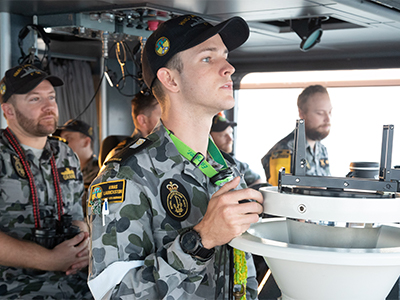Quantum-Assured PNT

Ensuring the ADF and its coalition partners can operate in complex and contested environments with uninterrupted access to position, navigation and timing information.
‘Position, navigation and timing data are essential for the command and control of deployed forces. These systems enable the sharing of real-time operational and logistical information and for the placement, navigation and synchronisation of Defence assets.’
— Force Structure Plan, 2020
Context
Since its inception in 1978, the US Global Positioning System (GPS) has had a revolutionary impact on military capability. It has enabled precise navigation and manoeuvre on the battlefield, allowed the development of precision-guided weapons and provided an unprecedented ability to coordinate and synchronise a distributed force. This dependence on global navigation satellite systems (GNSS) has carried over to the civilian and commercial sectors.
Deep reliance on GNSS by armed forces represents a critical vulnerability as adversaries might seek to degrade or deny access by electronic jamming and deception or through anti-satellite systems. This threat extends beyond restricting the ability to navigate, potentially affecting other fundamental capabilities such as secure communications, intelligence collection and the synchronisation of distributed military systems and networks.
The ADF and coalition partners must have assured position, navigation and timing (PNT) capabilities that would enable uninterrupted operation in GNSS-degraded or denied conditions. This includes in contested environments and complex terrain where obtaining satellite reception is challenging (such as in underwater, subterranean, mountainous, or dense urban settings).
The ADF’s assured PNT capability will integrate emerging quantum technologies with conventional solutions to provide sensitivity, accuracy and precision over extended timeframes and under a range of operationally relevant conditions in the absence of GNSS signals.
Opportunities
- The miniaturisation and maturation of advanced quantum sensing and measurement technologies applicable to PNT, including atomic clocks, quantum accelerometers, magnetometers and gravimeters.
- Advances in classical sensor technologies, including optical gyroscopes and inertial sensors, to improve accuracy and precision.
- Integration and fusion of quantum and classical sensors to achieve precise position, navigation and timing with dramatically reduced drift over long durations.

